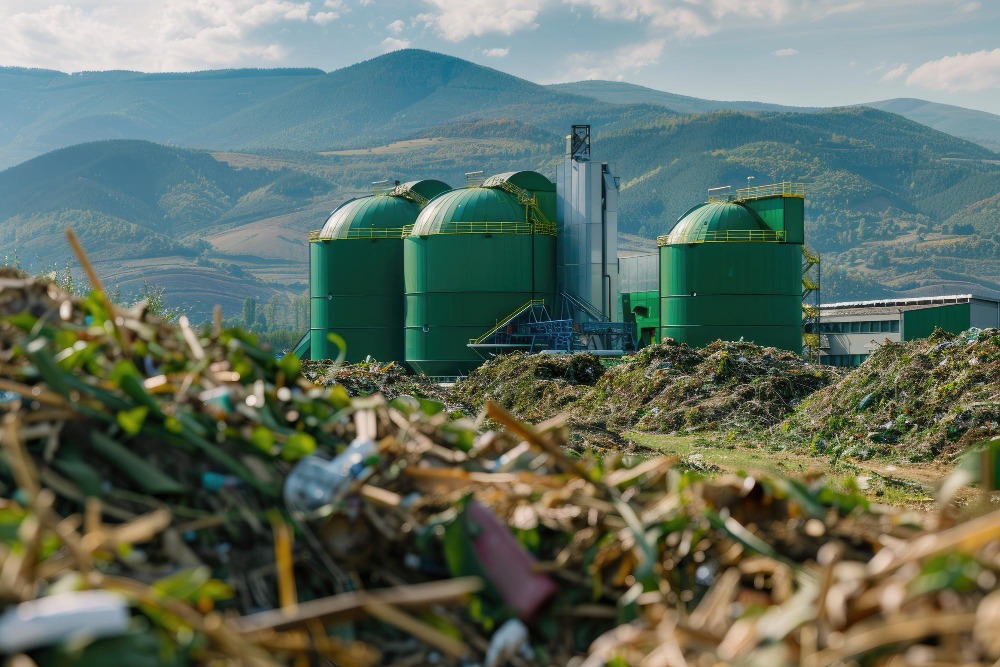
Product walkthrough, trial, POCs, enterprise offering, support and more. Speak with one of our specialists.


Product walkthrough, trial, POCs, enterprise offering, support and more. Speak with one of our specialists.

Tech and Innovation
In many major cities, piles of garbage are a common sight. Every day, tons of waste are generated from households, markets, restaurants, and industries. Unfortunately, most of this waste ends up in landfills, accumulating without proper management. This condition not only disrupts aesthetics but also becomes a source of greenhouse gas emissions and soil and water pollution. However, amidst this problem, a promising opportunity emerges: converting waste into valuable energy through a process called bioconversion. This concept changes the perspective on waste, from being seen as worthless, into a resource that can be processed to provide benefits while reducing negative impacts on climate change[Ref].

Bioconversion is the process of turning organic materials into energy or other valuable products with the help of living organisms, such as microbes, worms, or larvae. Instead of being burned or buried, organic waste can be naturally decomposed to produce something useful. For example, microorganisms can break down kitchen waste into biogas, or Black Soldier Fly (BSF) larvae can turn food scraps into high-protein animal feed. This approach offers a more environmentally friendly alternative compared to incineration, which produces air pollution, or landfills that require large areas of land.
The type of waste that can be processed through bioconversion is organic waste. Organic waste is material derived from living beings, such as food scraps, agricultural waste, leaves, and livestock manure. Organic waste contains nutrients that decomposer organisms can use. For example, vegetable and fruit waste from markets can be turned into organic fertilizer, while cow or chicken manure can be fermented into biogas for cooking or lighting[Ref].
Although it may sound complex, the bioconversion process can be explained in simple steps. First, organic waste is collected and separated from inorganic waste such as plastic or metal. This sorting stage is important because contamination can disrupt the performance of decomposer organisms. Next, the organic waste is processed using suitable methods, such as anaerobic fermentation to produce biogas, or BSF larvae cultivation to produce animal feed. The final results of this process can be energy in the form of gas or solid products such as nutrient-rich compost.
For example, in biogas production, organic waste is placed into a closed oxygen-free digester. Microbes then break down the material, producing methane that can be used for electricity or fuel. Meanwhile, the solid residue can be turned into organic fertilizer for sustainable agriculture.
The benefits of bioconversion are broad, covering environmental, economic, and social aspects. From an environmental perspective, bioconversion helps reduce the volume of waste that ends up in landfills, thereby cutting methane emissions that are harmful to the atmosphere. From an economic perspective, products resulting from bioconversion, such as biogas or animal feed, have market value that can increase income. Meanwhile, from a social perspective, applying this technology creates new business opportunities and jobs, especially in areas with abundant organic waste.
In addition, bioconversion also contributes to the transition towards renewable energy. By using waste as a raw material for energy, we reduce dependence on fossil fuels, which are increasingly depleting.
Although it offers many advantages, implementing bioconversion also comes with challenges. One of the main obstacles is the initial capital needed to build processing facilities, which can be quite costly. In addition, public education is required to encourage waste sorting from households. Without proper sorting, the bioconversion process may be disrupted or its results suboptimal. Technical factors such as equipment maintenance, raw material quality monitoring, and management of process by-products also pose challenges that must be addressed.
Moreover, regulatory support and government incentives are crucial. Without clear and supportive policies, the adoption of this technology may progress slowly, despite its great potential.
Indonesia has great potential to develop bioconversion, given that the amount of organic waste produced reaches around 13.2 million tons per year[Ref]. With a large population and extensive agricultural activity, raw materials for this process are abundant. In the future, integrating bioconversion with renewable energy policies and integrated waste management could be a strategic step to reduce emissions, generate clean energy, and improve community welfare.
Collaboration between the government, private sector, research institutions, and society is key. With technological innovations that are becoming cheaper and more efficient, it is not impossible that bioconversion will become part of everyday life in various regions.
Turning waste into energy through bioconversion is not just a futuristic idea, but a real solution that has been proven in many parts of the world. With the right approach, technical and social challenges can be overcome, paving the way for a cleaner and more sustainable future. Waste that was once seen as a problem can now become a source of life—lighting homes, powering machines, or enriching soil. It all comes down to how we view and manage the potential that has long been wasted.






















Jejakin’s green programs combine high-tech monitoring, biodiversity restoration, and community-led initiatives to deliver powerful, sustainable change across ecosystems.








